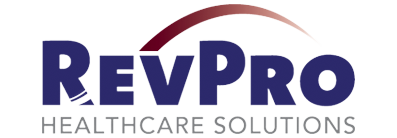Published: September 15, 2017 | Updated: March 11, 2024
As anyone running a medical practice knows, even the most successful medical practices sometimes have problems with patient collections. Yet, keeping patient payments on-time is essential for having enough working capital on hand to keep a medical practice open. We are offering some recommendations on how medical offices can make patient collections more efficient by modifying the patient collections process and create a better billing workflow. Here are some recommendations that could help your medical office.
Verify Insurance Multiple Times
Insurance coverage or information is the common reason behind many rejected or denied claims. That could be incorrect patient information (e.g. spelling error in name or possibly a wrong date of birth), or changes in insurance coverage. In some cases, it’s as simple as correcting an error, such as a typo in the patient’s insurance ID. In other cases, it can be complicated. As an example: a patient that had insurance but it is not covering treatment.
Even when there is a simple mistake, it takes time for your medical biller to find out what went wrong, to correct it, and resubmit it. There are time limits that payers require to get these corrections. If your practice misses these timelines then you won’t get paid.
It’s an easy solution to use your medical practice management software to cross-check the patient’s insurance coverage, when the patient schedules an appointment. Your billing company should also check insurance coverage right before the appointment. This way if there is any error then it can be identified and corrected well in advance.
Ask Patients to Pay Up Front
According to the Camden Group, a company specializing in healthcare research, statistics show that paying up front is one option for a doctor to get the money that is owed to them. The chance of patients paying at check-in is 90 percent. Patients will conclude they won’t be seen without paying, so most are willing to pay before meeting with the doctor. However, statistics show this rate drops to 70 percent right after the visit has been completed. The rate is lowered to only 40 percent just one month after the visit. Doctors can avoid all of these problems simply by having a policy where patients must pay upfront, or they will not be able to be seen.
Inform Patients of What They Need to Pay
Frequently, it’s not that patients aren’t willing to pay, it’s that they are not prepared to pay. The billing department or office should always check insurance eligibility on every patient before their visit to determine the copay or deductible. By doing this, offices can inform patients exactly what their payment will be prior to the visit. This gives them more time to prepare and acquire the funds.
Use Technology to Improve Payment Collection
After your medical billing team submits the claim to the payer and there is still some outstanding balance, you can send an invoice to your patients by email. But it is actually more effective to send them an automatic notification about their invoices being due.
A follow-up text message and an email reminder can save your practice the expense of mailed billing. A simple text is also more likely to produce an immediate response from a patient. It is crucial to have a method for have an online invoice payment to patients so they can easily clear outstanding balances without the need to mail a check.
Offer Online Payment Options
Younger patients might be more likely to pay their bills through an online payment portal. This payment method makes it easy for patients to know exactly what they owe at any given point. Instead of waiting for an invoice to arrive in the mail, they can simply log into their account, see their payment or balance amount, and pay with a credit or debit card.
Please Note: It’s extremely important to ensure that any online payment system is secure and complies with HIPAA requirements. Any breach in security could put a patient’s private health information at risk.
Create a Payment Installment Program
This is a good idea especially for more expensive procedures. Many patients just can’t afford to pay a large bill all at once. To increase your office’s chances of getting any reimbursement, payment plans are very helpful. A structured payment plan of gives the patient a chance to pay their bill over time on a set schedule. Naturally, this method will take more time to get the money, however, it’s much better than not getting paid at all.
For more help redesigning the patient collections process and getting a better medical billing solution, doctors’ offices can contact RevPro Healthcare Solutions at 561-578-8400. With years of in-depth experience, RevPro Healthcare Solutions can help medical businesses enact new policies for increased revenue.
Share this article:

